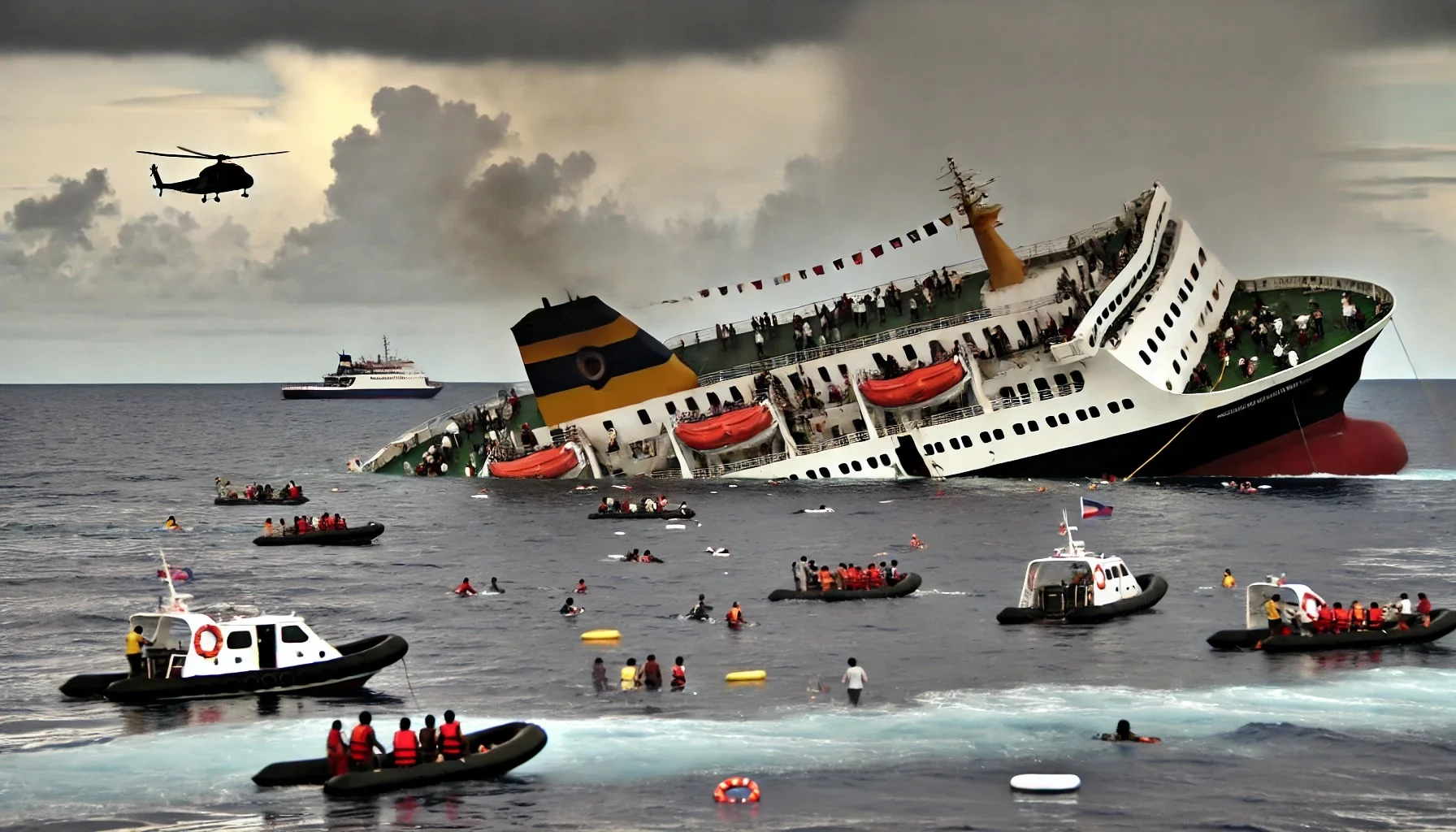
The SuperFerry 9
by: The Calamity Calendar Team
September 6, 2009
A Routine Voyage Turns Tragic
The day began like any other for the 971 people aboard SuperFerry 9. Families, professionals, and students had boarded the ferry in General Santos City, heading toward Iloilo City. It was supposed to be a routine journey, one of countless voyages made across the Philippines’ vast archipelago. But at 2:00 a.m. on September 6, 2009, everything changed.
Without warning, the ferry, a 7,268-ton vessel built in 1986, began to list dangerously to its starboard side. Passengers were jolted awake as the ship tilted, sending furniture and belongings sliding across the decks. Some passengers reported loud banging sounds that suggested the ferry’s cargo had shifted during the tilt.
Chaos in the Dark
By 4:40 a.m., the ferry’s captain, Jose Yap, sent out a distress call. The Philippine Coast Guard (PCG) and the Philippine Navy scrambled to respond, but the ferry was far from shore, about 9 nautical miles off the coast of Siocon, Zamboanga del Norte. The seas were rough, and it would take hours for help to arrive.
Inside the ship, panic set in. Passengers were ordered to abandon ship, and lifeboats were deployed. For many, it was their first time using life jackets or stepping into lifeboats. Some passengers jumped into the sea, clutching debris to stay afloat. Amidst the confusion, sea marshal Loreto Justo recalled how he prayed for survival as the ship listed further and further, making any movement on board increasingly dangerous.
The Final Moments
At 9:00 a.m., nearly seven hours after the ship had started to list, SuperFerry 9 disappeared beneath the waves. But by then, the rescue effort was in full swing. Nearby vessels like the MV Myriad and MV Ocean Integrity had already pulled hundreds of passengers from the lifeboats. The Philippine Navy and Coast Guard vessels arrived with helicopters, plucking survivors from the choppy waters.
In total, 926 people were rescued. But despite the efforts, nine passengers perished, including a two-year-old child.
Thanks for subscribing!
A Troubled History
The sinking of SuperFerry 9 was not a total surprise. The vessel had a long history of mechanical problems, including engine failures that stranded it off the coast of Camiguin just four months before the sinking. In fact, the ship had experienced multiple breakdowns since 2006, casting doubt on its seaworthiness long before the disaster.
At the time of its final voyage, SuperFerry 9 had been carrying 200,000 liters of fuel oil, raising concerns about a potential environmental disaster. Fortunately, experts believed that the oil remained sealed within the ship’s tanks at the bottom of the Sulu Sea.
A Nation Reckons with Maritime Safety
The tragedy prompted immediate action from the Maritime Industry Authority (MARINA) and other regulatory bodies. All vessels under Aboitiz Transport System, which owned SuperFerry 9, were grounded for inspection. The disaster also revived scrutiny of the safety standards of roll-on/roll-off ferries (Ro-Ro) in the Philippines, which had already seen over 15 major maritime accidents since the 1980s.
Despite the initial fears, investigations later found no immediate evidence of a hull breach or recurring engine problems during the final voyage. However, questions remained about whether improper cargo loading may have contributed to the severe list.
Rescue and Reflection
In the days following the disaster, a full-scale search continued for the missing passengers, with fishing vessels and local volunteers joining the effort. While the majority were accounted for, the tragedy left 33 people initially unaccounted for. The survivors were returned home in a somber mood, many of them haunted by the sight of the sinking vessel and the lives lost.
The sinking of SuperFerry 9 served as a chilling reminder of the vulnerabilities in the Philippine maritime industry. While the country has made significant progress in the years since the tragedy, with tighter safety regulations and more frequent inspections, the legacy of SuperFerry 9 remains a stark warning of what can happen when standards slip.
Conclusion
The SuperFerry 9 disaster remains a key moment in the Philippines’ maritime history. The survival of so many passengers was a testament to the heroic rescue efforts of the Coast Guard, Navy, and nearby vessels, but the deaths and trauma left in its wake also underscored the urgency of maritime reform. Today, the story of SuperFerry 9 continues to serve as a reminder of the sea’s unpredictability—and the critical importance of safety at sea.
Stay in the Loop!
Become a Calamity Insider and get exclusive Calamity Calendar updates delivered straight to your inbox.
Thanks! You're now subscribed.